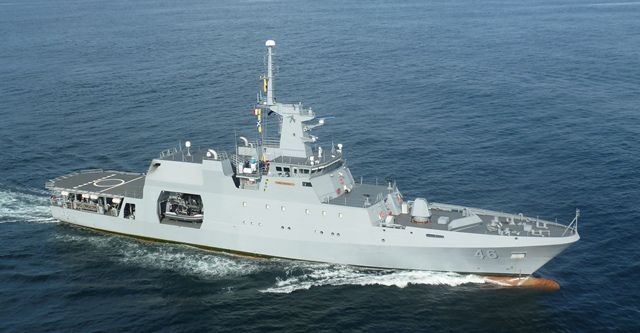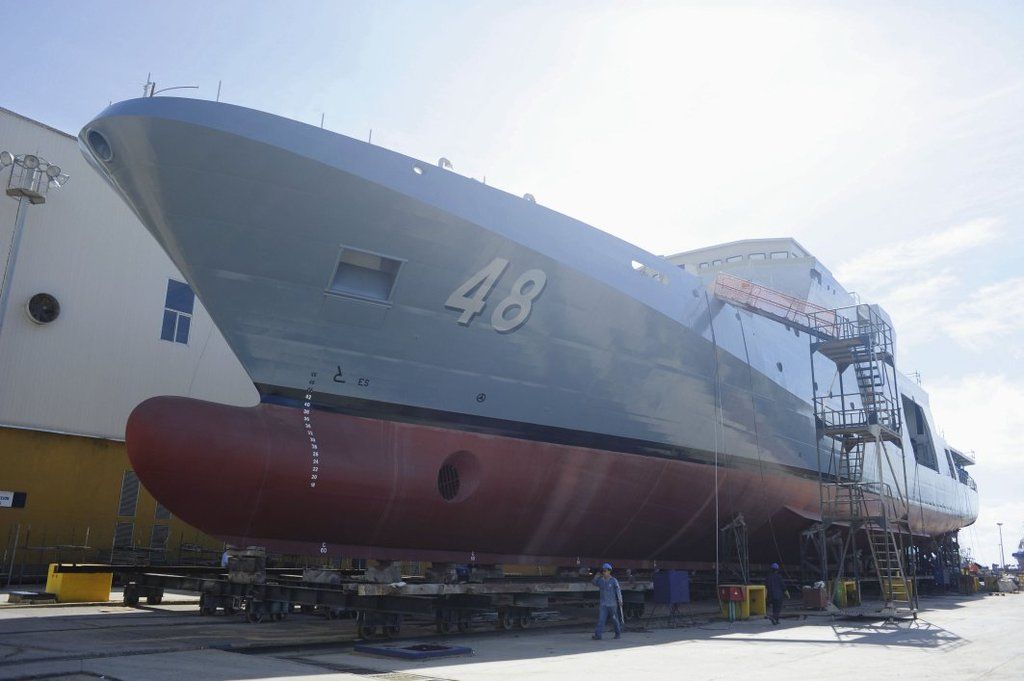COTECMAR launches new OPV
Erwan de Cherisey, Paris - IHS Jane's Defence Weekly 02 December 2016

Colombia's Corporación de Ciencia y Tecnología para el Desarrollo de la Industria Naval, Marítima y Fluvial (COTECMAR) launched its ARC Santander offshore patrol vessel (OPV) during an official ceremony presided by President Juan Manuel Santos in Cartagena on 1 December.
Santander, seen here in October 2016 under construction at COTECMAR's shipyard in Cartagena, is the third OPV-80 produced for the Colombian Navy and is based on a Fassmer design. (Erwan de Cherisey)

Construction began in December 2014 for the vessel, which is based on German shipbuilder Fassmer's OPV-80 design. The new OPV is 80 m long and displaces 1,725 tonnes.
Captain Freddy Zarate, engineering manager at COTECMAR, told IHS Jane's in October that Santander is the third OPV-80 to be built by COTEMAR, after ARC 20 de Julio and ARC 7 de Agosto .
http://www.w54.biz/showthread.php?1588-OPV-s-and-other-such/page18Abraços